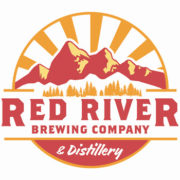
This is a simplified version of what takes place at each step, and for ease, have been focused primarily on beer brewing and whisky making.
- Malting – Malting is the process where grain, usually barley, is soaked in water, germinated, and dried. Grain is used as the base for both beer and whisky.
- Milling – Milling is a fancy word for crushing the grain.
- Mashing – Yeast (which is part of a later step) isn’t very efficient at breaking down or converting long-chain sugars, and starch is a long chain sugar. Mashing is where you combine your milled/crushed grain with water that’s warm enough to activate the enzymes, which chop up the starches into short-chain sugars. This step is generally only part of all-grain recipes.
- Sparging – Sparging is a fancy word for rinsing, and is done to separate the sugar from the solids, and also reduces the potential alcohol. In all-grain recipes where the brewer/distiller mashes the grains, like in the previous step, you will rinse the grains. This step is unique to brewing, where you want to reduce your potential alcohol down to something like 5%. However, when you’re making whisky, you are trying to get the potential alcohol as high as possible, so this step is eliminated.
- Boiling – This step is again unique to home brewing, but may be done even if you are not using an all-grain recipe. Boiling is used to extract flavors from other ingredients, such as hops, remove proteins that cause chill haze, and a host of other reasons that do not apply to making whisky.
- Distilling – Instead of bottling your beer or wine you will now simply transfer the fermented liquid to your distiller. Distillation is really just the boiling and re-condensing of a liquid, and that liquid could be water, perfume, essential oils, or alcohol. Pot distillation is most commonly used for flavored spirits, such as whisky, brandy, schnapps, etc. It requires you to control what parts of the distillate to collect or discard based on temperature, smell, taste and experience. On the other hand, reflux distillation is the most commonly used method among new distillers. Just like kit brewing, it is the simplest to learn and get right, and allows you to become comfortable with the overall process. Reflux distillation is most commonly used for distilling neutral spirits (vodka), some rum, and in more advanced procedures and equipment, gin.
- Aging – This is what you do between the time you make it and the time you get to enjoy the fruits of your labor. By aging we don’t simply mean setting the product aside and waiting, but actually aging in oak barrels, or in containers with oak, other wood, fruit, etc., in order to alter the character of the finished product. This can take a varying amount of time, and is generally only done for certain types of distilled spirits, such as whisky and wine. It is not part of the home brewing process.

This infographic is compliments of Brewhaus.com.














